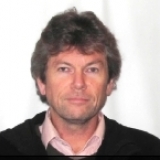Land degradation poses a serious problem for the livelihoods of rural producers. Furthermore, there is rarely enough private investment taking place to commensurate the scale of the problem. This article examines the role of tenure insecurity, resource poverty, risk and time preferences, and community-led land conservation on differentiated patterns of household investment in land conservation in northern Ethiopia.
We control for biophysical, household characteristics, market access conditions, and village level factors. Investments in soil bunds and stone terraces are specifically studied so as to capture the link between these various factors and the durability of conservation investments. We introduce the distinction between the determinants of the decision to invest and how much to invest in conservation. Regression results show that publicly led conservation programs seem to significantly stimulate private investment. A host of plot-level variables and household perceptions of returns on conservation investments, expressed in terms of perceived improvements in land quality and increased crop yields, were found to be critical to the decision to invest and intensify soil conservation. The evidence on the significance of households' attitudes toward risk aversion suggests the important role of risk and the household's risk-bearing capacity in the decision to intensify conservation measures. At the same time, tenure security indicators and households' resource endowments (resource poverty) had weaker effects in increasing willingness to invest and the level of investment made. The policy implications of these results point to the importance of agricultural research and extension efforts that target technologies which reduce household risk and poverty while enabling sustainable investments in conservation measures by individual households.
Files and links
Request a publication
Due to Copyright we cannot publish this article but you are very welcome to request a copy from the author. Please just fill in the information beneath.

